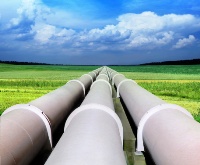Five years and five months have passed since TransCanada first asked the State Department to bless KXL. Since the pipeline would cross America’s international border with Canada, it requires presidential approval, typically influenced by the State Department’s guidance. Since TransCanada filed its application on September 19, 2008, State has been very generous with its advice, offering at least five different assessments on KXL:
• On April 16, 2010, State found that KXL would have “limited adverse environmental impacts.”
• On August 26, 2011, State stated that “There would be no significant impacts to most resources along the proposed pipeline corridor.”
• On March 1, 2013, State virtually echoed its previous report when it ruled that “there would be no significant impacts to resources along the proposed Project route.”
• This past January 31, State concluded that “approval or denial of any one crude oil transport project, including the proposed project, remains unlikely to significantly impact the rate of extraction in the oil sands, or the continued demand for heavy crude oil at refineries in the U.S.”
• On February 26, State’s Office of Inspector General rejected charges that the department’s KXL review suffered ethical lapses: “OIG found that the department’s conflict of interest review was effective and that the review’s conclusions were reasonable.”
Obama’s 61-month-long navel-gaze on KXL (atop the four months that State pondered the pipeline late in G.W. Bush’s presidency) is pathetic when compared with American milestones that were achieved in less time:
• NASA needed four years, from 1979 to 1983, to build the Space Shuttle Discovery.
• As OilSandsFactCheck.org outlines in an excellent infographic, it took just two years (1941 to 1943) to build the Pentagon — the world’s largest office building, and home to 30,000 military and civilian employees.
• The Golden Gate Bridge linked San Francisco and Marin County, Calif., after just four years and four months of work over one of America’s most unforgiving waterways. Construction began on January 5, 1933. Pedestrians first crossed the bridge on May 27, 1937; cars followed the next day.
• Hoover Dam required five years of construction (1931 to 1936). It was finished two years ahead of schedule.
• It took one year, three months, and nine days to erect the Empire State Building. Between January 22, 1930, and May 1, 1931, a force of 3,439 men built what became — at 1,454 feet — Earth’s tallest skyscraper.
Obama’s endless “study” of Keystone is disgraceful. If he believes it should be built, he should approve it. TransCanada will invest $5.3 billion to build the pipeline. Taxpayer cost: $0.00. While some 10.2 million Americans officially are out of work, KXL will offer direct or indirect employment to an estimated 42,100 people.
“These jobs are really good-paying jobs,” says Union Business Manager magazine. “They provide not only a good living wage, they provide health care, and they also provide pensions.” Senate Republican leader Mitch McConnell of Kentucky calls KXL “the single largest shovel-ready project in America.”
Beyond the unemployed, all 315 million Americans would enjoy the steady flow of friendly oil from a NATO military ally. Every petrodollar exported to Canada is one less dollar shipped to overseas oil producers — such as terrorist-funding Saudi Arabia, gay-jailing Nigeria, and the Crimea-invading Russian Federation.


 A glance at two maps – top import and expert country for each state in 2016 – reveals some interesting observations:
A glance at two maps – top import and expert country for each state in 2016 – reveals some interesting observations:

 The
The  The Keystone XL Pipeline bill was narrowly defeated Tuesday in the U.S. Senate. Indiana Chamber of Commerce President and CEO Kevin Brinegar offers his thoughts on the policy and the latest activity in Washington:
The Keystone XL Pipeline bill was narrowly defeated Tuesday in the U.S. Senate. Indiana Chamber of Commerce President and CEO Kevin Brinegar offers his thoughts on the policy and the latest activity in Washington: It must be a sign of advancing age that I fondly recall the days of three area codes that covered the state of Indiana. Today, that number is six with a seventh set to go into effect next month and public field hearings underway now on 317 area code relief.
It must be a sign of advancing age that I fondly recall the days of three area codes that covered the state of Indiana. Today, that number is six with a seventh set to go into effect next month and public field hearings underway now on 317 area code relief. The Indiana Chamber
The Indiana Chamber  The U.S. Department of Transportation (DOT) is currently seeking comments on the Primary Freight Network and National Freight Network designations. The Indiana Chamber believes that I-69 should be included as part of the National Freight Network and is asking DOT to support this effort.
The U.S. Department of Transportation (DOT) is currently seeking comments on the Primary Freight Network and National Freight Network designations. The Indiana Chamber believes that I-69 should be included as part of the National Freight Network and is asking DOT to support this effort.